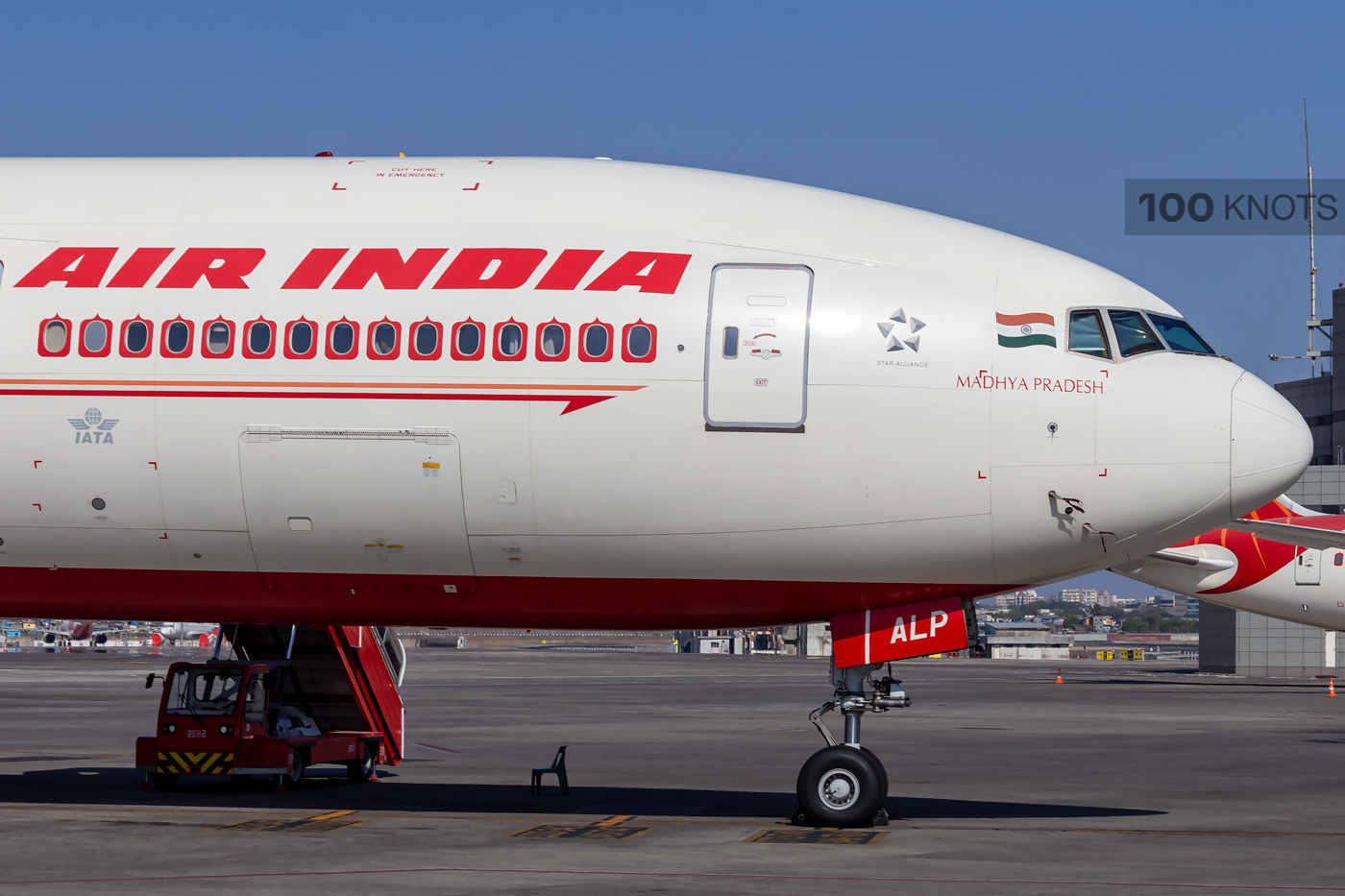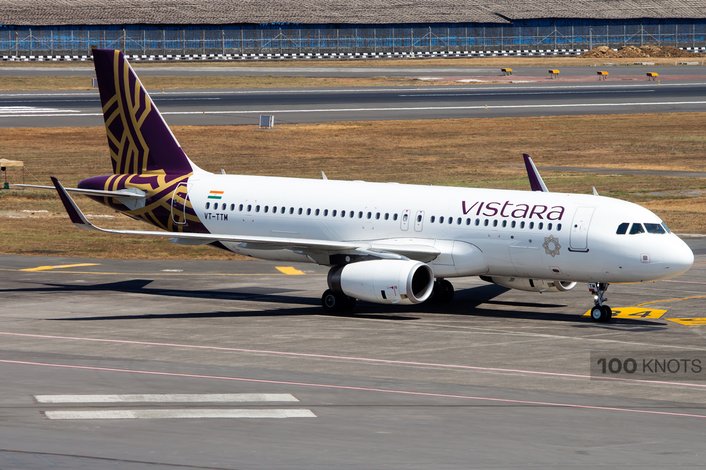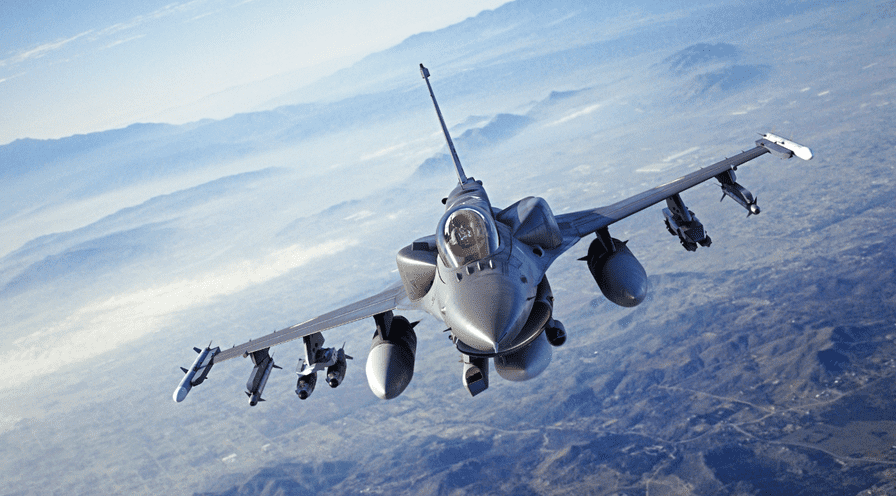Pawan Hans will launch helicopter services on six routes in Assam on February 8.
These routes will be launched under the regional air connectivity scheme UDAN.
Pawan Hans has been awarded 86 routes under the scheme in six states.
According to an official release on Monday, the company will provide connectivity on "Dibrugarh-Jorhat-Tezpur-Guwahati-Tezpur-Jorhat-Dibrugarh" network in the first phase.
"Subsequently, the services will be operationalised in the state of Arunanchal Pradesh," it said.
https://twitter.com/PawanHansLtd/status/1622792702927720448
The RCS UDAN of the Ministry of Civil Aviation is giving special impetus to providing air connectivity to the remote places of the northeastern states which have inadequate rail and road connectivity.
The Ministry said that operationalization of these routes will create ease of travel for the residents of the region and give a boost to trade and tourism.
UDAN, which is an acronym for the scheme called Ude Desh ka Aam Naagrik, is a regional airport development program under the Centre’s regional connectivity scheme, aimed at refurbishing under-served airports to make air travel affordable.
Union Finance Minister Nirmala Sitharaman on February 1 proposed to increase the budgetary allocation for the Government's regional air connectivity scheme UDAN in FY24.
In the Budget for the next financial year, the Finance Minister earmarked Rs. 1,244.07 crore for the scheme, up from Rs 600.71 crore (BE FY23) and a revised estimate of Rs 1,078.81 crore.
“The proposal is for the revival of 22 airports and for commencement of 100 RCS (Regional Connectivity Scheme) routes…(and) Viability Gap Funding for North East Connectivity,” said the notes on demands for grants.
In recent years, the Centre has been improving regional air connectivity through UDAN, which focuses on linking Tier-2 and Tier-3 cities.
The scheme provides viability gap funding, a form of financial support, to airlines that have been selected via a bidding process to operate flights on under-served or unserved routes.
Read next
By 2050, it is anticipated that aviation will have increased its share of world CO2 emissions from 2.5% to 25% as other industries go carbon-free. Quitting flying is the simplest method to decarbonize aviation. Current operations require new fuels that don't produce CO2 in order to continue. Although expensive, manufacturing is constrained, and sustainable aviation fuels continue to emit CO2 that remains in the atmosphere for eons, they provide a bridge for existing fleets.
Representative
In contrast, hydrogen is carbon-free and outperforms kerosene in terms of gravimetric efficiency, a factor that is critical in the aerospace industry. The UK Government-funded Aerospace Technology Institute (ATIFlyZero )'s research program, which published its findings earlier this year, confirmed the viability of hydrogen-powered aircraft.
Developments so far
Fuel cells or modified turbine-based powertrains, cryogenic tanks, and hydrogen infrastructure at airports will be necessary for hydrogen-powered aircraft.
Hydrogen fuel-cells | Representative | Bloomberg
FlyZero presented physics-based models of three study aircraft of increasing size and range,” explains FlyZero chief propulsion engineer. It found a hydrogen-powered mid-size aircraft carrying 280 passengers could travel anywhere in the world with one refueling stop. That changed industry perceptions of hydrogen as a future net-zero fuel- explains FlyZero chief propulsion engineer, Simon Webb
Airbus is in charge of developing aircraft fueled by hydrogen, and it is modifying its test A380 MSN001 to serve as its demonstrator for its ZEROe program.
Imagine it as a flying hydrogen laboratory. Without seats, the A380 test aircraft gives us the entire main and upper decks to conduct tests. We will fit a fifth engine that burns hydrogen in a stub above the fuselage. Inside, we will install four cryogenic tanks within a non-pressurized bubble and hydrogen distribution and evaporation systems- says Airbus’ head of ZEROe demonstrators and tests, Mathias Andriamisaina
The aircraft will still be powered by conventional engines, but it will also offer a test environment for hydrogen propulsion systems. However, Airbus is not relying solely on hydrogen combustion and is investigating other ideas concurrently. In order to decarbonize present fleets, it believes sustainable aviation fuel to be essential.
The obvious challenges
Retrofitting an airliner with hydrogen engines is not a viable way to serve airlines. An aircraft with low maintenance and operating costs with hydrogen propulsion must start from a clean-sheet design with freedom to play with the locations of tanks and passengers- says Andriamisaina
By 2035, Airbus plans to launch a 100-seat, 1,150-mile (1,850-kilometer) range initial product before developing a 200-seat, 3,700-mile (2,300 km) range hydrogen combustion aircraft.
Due to its smaller volume, liquid hydrogen uses 80% less fuel tank space than gaseous hydrogen to provide the same amount of energy. Since only liquid hydrogen, according to Airbus, will work for strong, transcontinental aircraft, the development of on-board cryogenic equipment is necessary.
We must store liquid hydrogen below -253°C (-423?F) for twelve hours or more. We want a fully passive system, without freezers or compressors, to optimize storage capacity against system mass. Airbus has launched Zero-Emission Development Centers (ZEDCs) in France, Germany, UK and Spain to create in-house capability for insulated, safe and reliable cryogenic storage and distribution- Andriamisaina explains
Airbus
It is necessary to merge cryogenic technology, which is primarily utilized for chemical land storage, with aircraft. Aircraft will require cryogenic leak detection, distribution, and evaporation systems in addition to tanks. Experience with cryogenic fluids from the space sector is relevant, however whereas rockets burn quickly and strongly, an airliner's cryogenic pumps will need to last 10,000 hours.
Race to hydrogenation
Using considerably shorter timeframes, startups H2FLY and ZeroAvia are constructing smaller, fuel-cell-powered aircraft. ZeroAvia is ready to test a 19-seater Dornier 228 with a 600kW propulsion system after successfully flying a six-seater Piper Malibu with a 250kW hydrogen-electric propulsion system in 2020.
AOPA
By 2025, ZeroAvia hopes to have its 600kW powertrain certified so that it can be used in aircraft with nine to nineteen seats. This is the same timeframe that H2FLY anticipates beginning operations with their 300kW five-seater aircraft. The technology used on the company's HY4 hydrogen-retrofitted Pipistrel Taurus G4 glider, originally created at the German Aerospace Center, will be used on H2FLY's aircraft.
SOURCE
Airbus will do small-scale tests with smaller planes to gather information. The Arcus-J sailplane that set the world record for glider height will have hydrogen combustion retrofitted as part of the Blue Condor project by Airbus and the nonprofit Perlan Project. However, creating an airplane powered by hydrogen is a longer-term project.
Arcus | Representative | SOURCE
In the UK, Rolls Royce is already testing gaseous hydrogen combustion and injection at Boscombe Down and plans to test an engine there as well. At Filton, Bristol, Airbus will test hydrogen fuel systems and individual parts. At Cotswold Airport in Gloucestershire, which also houses ZeroAvia's test-hangar, engineering firm Filton Systems Engineering of the UK is generating liquid hydrogen.
Infrastructure on the ground and a reliable global hydrogen supply will be needed for hydrogen aircraft. Airbus has established an ecosystem team to construct physical and regulatory frameworks and joined the Hy24-managed hydrogen infrastructure fund.
Airbus
Together with Aéroports de Paris, Airbus will develop hydrogen infrastructure. At Stuttgart Airport, H2FLY executed its most recent flight campaign to highlight its integration with global operations.
SOURCE: AEROSPACE TESTING INTERNATIONAL
COVER: Honeywell Aerospace
Read next
Air India plans to borrow INR 18,000 crore from SBI and Bank of Baroda to refinance debt
Admin
07 Feb 2023

Air India plans to borrow around Rs 18,000 crore from SBI and Bank of Baroda in order to refinance existing debt over the short term, according to a report in The Economic Times.
This debt will be a continuation of the facility availed last year after Tatas took over the airline and is being availed until a long term debt strategy is finalised, the report added.
The Tatas completed one year of acquiring the debt-ridden Air India from the government on January 27 and plans are afoot for mega expansion with reports swirling of a a big order from the airline for both Boeing and Airbus.
Along with the mega expansion plans, Tatas have plugged gaps to improve the on-time performance of the airline and also standardising meals and service levels based on flight duration.
Singapore Airlines announced the merger of Vistara, its joint venture with the Tata Group, with Air India. As part of the merger with Air India, SIA will invest Rs 2,059 crore in Air India. Once the transaction is complete, SIA will hold 25.1 percent in Air India.
The group is also merging AirAsia India with Air India Express. Once the merger takes place by November 2023, it could lead to the cessation of the AirAsia India brand and leave Air India Express as the sole low-fare entity for domestic and international flights.
(With Inputs from The Economic Times)
Read next
The Federal Aviation Administration (FAA) is investigating a close call between a FedEx plane and a Southwest Airlines flight at Austin-Bergstrom International Airport in Texas on February 4, 2023.
The FedEx jet - a Boeing 767 cargo plane - had been cleared to land at Austin-Bergstrom International Airport at 06:40 local time (11:40 GMT) on Saturday morning, according to the Federal Aviation Administration (FAA).
But an air traffic controller cleared Southwest Flight 708 (B737) for departure from the same runway with the FedEx crew about three miles away, flight data interpreted by FlightRadar24 shows.
Aviation officials are investigating a near-collision between a FedEx cargo plane and a Southwest passenger flight at a Texas airport on Saturday.
The FedEx plane at one point reported an altitude of 75ft before climbing as it caught up to the Southwest plane, which remained on the runway.
An animated video released by FlightRadar24 shows the cargo plane approaching and passing directly over the commercial flight before making a sharp turn away from the runway.
https://twitter.com/flightradar24/status/1622067973111308288?s=20&t=A49untaiuM1W8zVeRLOxUw
Fortunately, both planes were able to continue on their respective flights without incident. However, the near miss has raised concerns about runway safety and the protocols in place to prevent such incidents from occurring.
The FAA is the primary agency responsible for ensuring the safety of air traffic in the United States, and it is taking the near collision at Austin-Bergstrom International Airport very seriously. The FAA has launched an investigation into the incident to determine what caused the two planes to come so close to each other, and what can be done to prevent such incidents from happening in the future.
The aviation industry is a critical component of the global economy, and incidents like this one serve as a reminder of the importance of maintaining the highest levels of safety and security in air travel. Airlines and airport operators must work together to ensure that they are following all necessary protocols and procedures, and that they have the appropriate safety measures in place to prevent incidents like this one from occurring.
It comes less than a month after a similar close call between an American Airlines and Delta Airlines plane in New York.
It is too early to determine what caused the near collision at Austin-Bergstrom International Airport, but the FAA is committed to conducting a thorough investigation and finding out what happened. The results of the investigation will be used to make any necessary changes to improve the safety of air travel for passengers and crew members alike.
In conclusion, the near collision between a FedEx plane and a Southwest Airlines flight at Austin-Bergstrom International Airport is a reminder of the importance of maintaining the highest levels of safety in air travel. The FAA is investigating the incident, and the results of the investigation will be used to improve the safety of air travel for everyone.
Read next
US defence major Lockheed Martin will showcase its F-21 fighter jet, S-92 multi-role helicopter, MH-60R Romeo multi-mission chopper and anti-tank weapon Javelin, among others, at the upcoming Aero-India exhibition in Bengaluru.
The 14th edition of Aero-India, known as Asia's largest aerospace exhibition, will be held at Bengaluru in Karnataka from February 13 to 17. Almost all leading aerospace companies around the world are expected to attend the event at Air Force Station, Yelahanka, in a total area of around 35,000 sq metres.
Lockheed Martin has been pitching its F-21 aircraft as the best option in the Indian Air Force's hunt for 114 combat jets. The company said it will showcase its vast range of advanced defence capabilities and solutions at Aero-India and the exhibits will include the F-21 fighter aircraft, C-130J transport aircraft, MH-60R 'Romeo' multi-mission helicopter, Javelin weapon system, and S-92 multi-role helicopter, among others.
"We are excited to participate at Aero-India 2023 to showcase our advanced capabilities and address our customers' biggest challenges for the 21st century," William Blair, chief executive, of Lockheed Martin India Private Ltd said. The top executive said Lockheed's focus in the country would be to create opportunities for the local industry to feed into the global supply chain and manufacture in "India, for India and for the world". "We continue to strengthen and grow our presence and partnerships in India for strategic security and greater self-reliance in the defence sector," he said. "We have a high degree of confidence in the manufacturing and technical capabilities of the Indian industry which is reflected through our two joint ventures and multiple associations with public and private companies of all sizes, including MSMEs," Blair added.
The company said the prime attraction at the Lockheed Martin booth will be the F-21 fighter aircraft cockpit demonstrator. It said the F-21 jet, which is on offer to the Indian Air Force (IAF) for the Multi-Role Fighter Aircraft competition, is configured with the latest sensors and mission avionic systems.
The Indian Navy's most recent rotary wing acquisition, MH-60R 'Romeo' Seahawk helicopter, will occupy a prominent place at Lockheed display. The MH-60R is an anti-submarine warfare (ASW) and anti-surface warfare (ASuW) multi-mission helicopter. The first three MH-60R helicopters were delivered to India in 2021 and are being utilised to train Indian pilots and crew members in the US.
In July-August last year, the Indian Navy accepted the delivery of another three helicopters at Kochi International Airport. A total of 24 MH-60Rs are being delivered to India over the next few years. Lockheed said the "world's most versatile" one-man portable and platform-employed anti-tank precision weapon system, Javelin, will also be a part of its exhibits at Aero-India. Using "fire-and-forget" technology, the weapon guides itself to the target, allowing soldiers and platform assets to reposition out of harm's way once the missile is fired, it said.
"Boosting Lockheed Martin's presence at the show will be the C-130J Super Hercules aircraft and the S-92 multi-role helicopter, both of which represent a strong legacy of partnership with the Indian defence industry," the company said in a release.
The Indian Air Force operates 12 C-130Js using the tactical airlifter for a variety of missions. India is also connected to C-130J through Tata Lockheed Martin Aerostructures Limited, a joint venture, that has the distinction of being the single-global source of C-130J empennage assemblies included on all new Super Hercules aircraft. All C-130Js now built have major components manufactured in India. Lockheed said its present and future programmes in India range from transport, maritime and fighter aircraft to sea and land-based air and missile defence projects, as well as capabilities in civil sectors, including new and renewable energy.
Read next
DGCA fines Vistara INR 70 lakh for not operating the minimum number of mandated flights
Admin
06 Feb 2023

Vistara airlines has paid a record penalty of ?70 lakh imposed by India’s civil aviation regulator for not operating the minimum number of mandated flights to underserved areas of the country’s northeast, officials said.
The Directorate General of Civil Aviation (DGCA) had in October last yearfined the full-service carrier for not complying with the rules in April. “The airline paid the fine this month,” an official said, seeking anonymity.
Director general Arun Kumar confirmed the development but declined to comment further on the issue.
“As a law-abiding organisation and in compliance with the order, Vistara has paid the penalty under protest,” a Vistara spokesperson told HT on Friday. “We also confirm to have deployed capacity in excess to the RDG (route dispersal guidelines) requirement since then, as we had been doing in the past.”
Officials said that Vistara could not operate one flight from Bagdogra due to which a record-breaking fine was imposed on the airline.
The CAT IIA routes served by Vistara under RDGs are - Srinagar-Jammu- Srinagar, Bagdogra-Dibrugarh- Bagdogra and Dibrugarh-Guwahati-Dibrugarh.
Vistara’s available seat kilometres (ASKM) for April 2022 was found to be 0.99%, lower than the requirement of 1% on northeastern routes as mandated by the civil aviation ministry.
“We have been consistently deploying more than the requisite ASKMs in the various categories, as prescribed in the RDG rule. For April 2022 also, we were poised to deploy significantly more than the minimum required ASKM per category, which would have resulted in 1.22% flights on CAT IIA routes against the requirement of 1%,” the airline said. “However, some flights had to be cancelled due to the closure of Bagdogra airport, leading to a shortfall of just 0.01% in the required number of flights in April 2022.”
The matter was highlighted in October last year, after which the airline had submitted a reply, a second official said. “Their reply, however, was not found to be satisfactory by the DGCA even in their appeal,” the official said, declining to be named.
Flights connecting to airports in the northeast, including Bagdogra in West Bengal, Jammu and Kashmir, Himachal Pradesh, Uttarakhand, Andaman & Nicobar and Lakshadweep, constitute the category II routes, and flights within these areas are classified as category IIA.
“Vistara had previously defaulted in the requirement of ASKM deployment in CAT IIA routes of route dispersal guidelines in November and December 2017 and in January 2018,” the second official said, adding that no penalty was imposed then, as there was no provision of levying penalty before May 2021.
(With Inputs from The Hindustan Times)





Comment